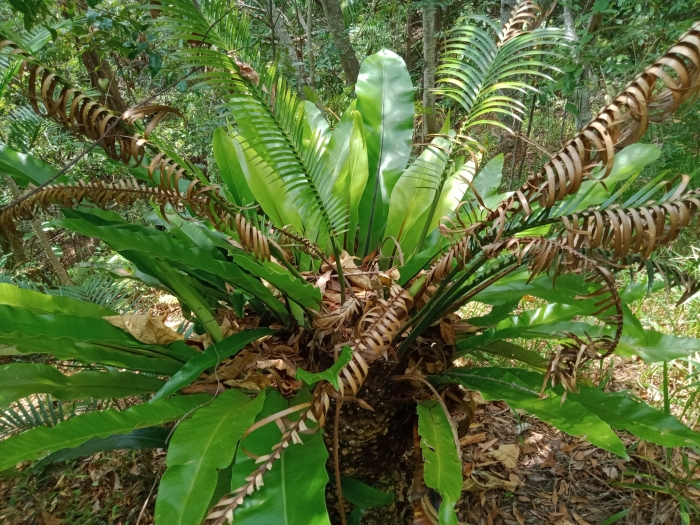Giant Cycad
(Lepidozamia peroffskyana)
Giant Cycad (Lepidozamia peroffskyana)
/
/

© Benjamin
CC BY-SA 4.0
Image By:
© Benjamin
Recorded By:
Copyright:
CC BY-SA 4.0
Copyright Notice:
Photo by: © Benjamin | License Type: CC BY-SA 4.0 | License URL: http://creativecommons.org/licenses/by-sa/4.0/ | Uploader: benanaboosh | Publisher: iNaturalist |























Estimated Native Range
Summary
Lepidozamia peroffskyana, commonly known as the Giant Cycad, is a slow-growing, palm-like cycad endemic to eastern Australia, specifically from Gympie, Queensland, to the Manning River, New South Wales. It is a perennial plant that can reach up to seven meters in height with a robust trunk up to 31 inches in diameter. The long, arching, glossy leaves can be several meters in length and feature around 200 dark green leaflets, creating a lush, tropical appearance. The Giant Cycad is dioecious, producing large, cylindrical cones, with male cones up to 30 inches long and female cones reaching up to 35 inches. Flowering occurs in the summer months, and while the cones are not particularly showy, they are significant in size.
In cultivation, Lepidozamia peroffskyana is valued for its dramatic foliage and prehistoric appearance, making it a striking feature in gardens and landscapes. It is often used as a specimen plant in large gardens, parks, and botanical collections. This cycad prefers a shaded to partially shaded position and requires well-drained soil. It is relatively low maintenance but requires protection from frost. While all parts of the plant are toxic, particularly the seeds, it does not generally pose a problem unless ingested. Due to its slow growth rate, it is not invasive and can be safely planted without concern for rapid spread.CC BY-SA 4.0
In cultivation, Lepidozamia peroffskyana is valued for its dramatic foliage and prehistoric appearance, making it a striking feature in gardens and landscapes. It is often used as a specimen plant in large gardens, parks, and botanical collections. This cycad prefers a shaded to partially shaded position and requires well-drained soil. It is relatively low maintenance but requires protection from frost. While all parts of the plant are toxic, particularly the seeds, it does not generally pose a problem unless ingested. Due to its slow growth rate, it is not invasive and can be safely planted without concern for rapid spread.CC BY-SA 4.0
Plant Description
- Plant Type: Tree, Shrub
- Height: 3-15 feet
- Width: 10-20 feet
- Growth Rate: Slow
- Flower Color: Orange
- Flowering Season: Spring
- Leaf Retention: Evergreen
Growth Requirements
- Sun: Part Shade, Full Shade
- Water: Medium
- Drainage: Medium
Common Uses
Low Maintenance, Potted Plant
Natural Habitat
Native to wet sclerophyll forests and rainforest margins
Other Names
Common Names: Cycad
Scientific Names: , Lepidozamia peroffskyana, Catakidozamia macleayi, Encephalartos denisonii, Lepidozamia denisonii, Lepidozamia minor, Macrozamia denisonii, Macrozamia gigas, Macrozamia peroffskyana, Zamia macleayi,
GBIF Accepted Name: